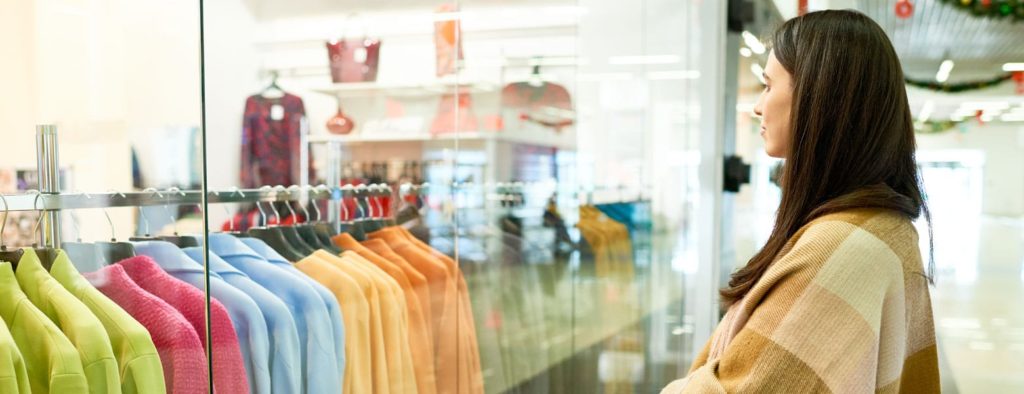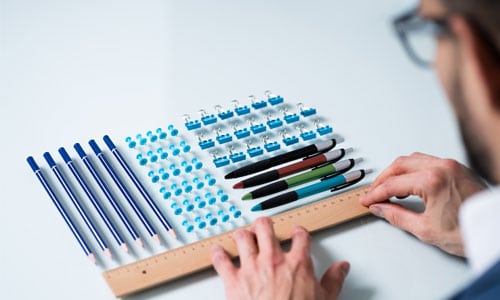ADHD and OCD: When Do They Co-Occur and How to Tell Them Apart
28th August 2020
Compulsive buying or oniomania (shopping addiction) may seem like an exaggerated or apologetic term for excusing something many of us consider a footnote in the catalogue of addictions. But it has far more to do with the fact that this disorder has become so acceptable in cultures worldwide. It’s a social experience, a reward for working hard, it doesn’t have the same physical mental and emotional degradation as substance abuse, and you can literally shop anywhere.
So often, we’re encouraged to spend more to “help the economy,” or, as is more common, to help ourselves, solve problems we never knew we had with products that quite possibly shouldn’t exist. It’s very much a labyrinth effect of the deeper you go into the maze, the hard it is to get out. Because shopping addiction – like many addiction disorders – is a behavioural disorder. And one of the chief influences that come into play within such conditions are environmental.
Symptoms of Being a Shopaholic
There isn’t any one trait that marks someone out as a shopaholic more than another. But many of those who do identify with the condition are often prone to approval seeking. They’re more agreeable by nature, which in long-hand means they’re kinder, more empathetic, and get one well with others. However, they’re also often lonely, and the shopping experience fills the void of interaction that is missing in their lives.
Low self-esteem is another clear marker found in those with a shopaholic personality. Shopping is used as an avenue to create an identity through the acquisition of materials goods by imprinting the qualities that are absent onto those items. So in effect, those cloths, jewellery and pieces of technology become extensions of that individual’s personality. However, low self-esteem can also come about through the debt incurred through continuous shopping.
Emotional problems can also play a significant role in the adoption of compulsive shopping tendencies and as ongoing triggers that keep people stuck in the cycle of their repetitious behaviour. In many instances, shopping is used as a way to alleviate unwanted emotions. It’s a way of numbing emotions that are too painful/difficult to deal with in the present, or else, to provide a short-term boost of morale.
And then finally, the one trait every shopping addict exhibits no matter where they are on the spectrum of the previously mentioned symptoms is impulse control. It’s the primary variable at play that determines whether someone decides to make a purchase or not. Even if all of the other issues are present, if there is sufficient impulsive control, the addiction never has a chance to take root.
Patterns of Compulsive Buying
Impulse Purchases: The classic form of purchase. People who fall into this pattern are likely those who feel they have a pro-active mindset. i.e., I’ll buy this just in case, or this is such a good price I can’t turn it down. But most often, these purchases go unopened and unused.
Buyer’s Delight: For many compulsive shoppers, it isn’t actually the purchase that makes them happy itself, but the momentary acquisition of it. In other words, it’s the novelty experience of getting some new, which, can only last for so long.
Comfort Buys: These are often a form of coping strategy to deal with unwanted and/or negative experiences. However, as with the novelty aspect of buying, it provides temporary relief from whatever emotions are the cause of distress.
Buyer’s Remorse: This is something we can all relate to on some level. We’ve all made purchases we’ve regretted. But within the context of a shopping addiction, it can often lead to a cyclical pattern, which involves the individual then trying to fix that remorse with yet more spending.
The Pain of Buying: One of the chief culprits that compulsive shoppers spend as much as they do is the use of credit cards. It divorces us from the process of handling cash, which serves as a numerical reminder of how much we’re spending at a given time.
Five Profiles of a Shopaholic
Image Spender: For this individual, their spending is very much linked to the perception they wish others to have of them. They might be first to offer to pick the bill, or want to be seen with the latest and greatest versions of clothes, accessories and technology.
Bargain Hunter: This one can be hard to spot, as you’d be forgiven for thinking of this archetype as a savvy shopper. They might haggle with sellers even in scenarios in which it isn’t proper to do so. Their main mission objective here is always getting the best deal and outsmarting the vendor.
Compulsive Shopper: This type of shopper is the one who will engage in bouts of blind shopping to numb themselves from emotional distress. They have an entitled disposition, playing into the narrative of, “I deserve.”
Co-dependent Spender: In this instance, the emphasis is on spending on others to gain their approval, or create a sense of loyalty that they feel is missing. This can be done with family, friends, and co-workers. However, it often has the effect of pushing those people away.
Bulimic Spender: This is an almost self-fulfilling profile, as the individual will go out of their way to spend all of their funds, as a way of imposing limits on themselves. And of course, it then leads to feelings of shame and guilt, which is perhaps the primary driver – to punish oneself.
How to Cope with Shopping Addiction (And Stop Overspending)
The advice that’s forthcoming may seem a little obvious, but the best way to manage your spending is to start keeping track of it. And there are many strategies you can employ. The first, is having a firm grip on what your fixed monthly outgoings are, and from there, you can know what extra you have to spend on luxuries. The next avenue to address, is getting rid of all unnecessary credit cards. If you need one as a holdover in-between pay periods, either get one with a very small credit limit, or else, agree a small overdraft with your bank. It’s vital that you guard against having any means by which you have ready access to funds that are separate from your main balance. You need to have accountability for your purchases. And so that means, as far as possible trying to use cash, so you can see exactly what’s leaving your hand. Card payments and wireless transfers may be more popular than ever. But until you can exercise a modicum of self-control, it would be wise to limit your capacity to distance yourself from the hard figures that are at the core of your spending.













